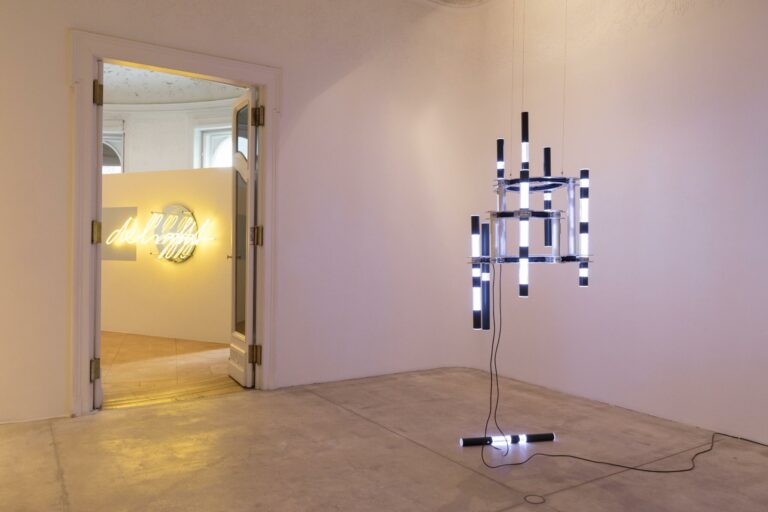
Brigitte Kowanz: Remember the Future
Galerie Krinzinger, Vienna, AT
Justin Mortimer (born in 1970 in Cosford, the United Kingdom, residing and working in London, the United Kingdom) is a contemporary painter best known for his surreal oil paintings, often large in scale, marked by darkness and the absurd. Groups of figures populate moody interiors, dazzling landscapes, or dark forests. Muted skin tones, tormented poses, and the recurrence of mysterious motives form a continuum throughout the highly-rated British virtuoso’s hallucinated scenes and complex narratives. As a result, we are pleased to present an interview with the artist in question, Justin Mortimer.
JD
Justin, it is a pleasure to have you on CAI for an interview. How have you been?
JM
I’m fine. Happy to be invited. Thank you.
JD
Let’s start the interview with the one thing we are sadly still been talking about almost every day for the past year or so, the pandemic. How did you experience it?
JM
Artists are pretty used to being shut up in a room alone, so I was mentally prepared for the isolation in some ways. Some artists have spoken of successfully navigating this time—in fact, even feeling guilty that they found it a fruitful period. Making work involves a singular, selfish drive, and withdrawing into that near-meditative state really helped me tune out the anxiety. Artists are lucky to have something so engrossing as a creative drive—in some ways, it can be helpful during a crisis. It certainly beats learning Bridge on Zoom.
I closed up my studio the day before the UK lockdown (in late March 2020) and set up a tiny studio in the spare room at home in London. My partner Kathy is also an artist and has her studio at home, so this meant that we would be working in proximity—something we had never done before, and we wondered how it would work out, but in fact, it turned out fine.
JD
Fortunately (laughs)!
JM
I had a lot of work to do for an upcoming show in Korea, and the constraints and physical limitations of this small room forced me to make succinct, modest paintings. It was weird to be away from my studio properly. I didn’t return to it for seven months, and it has taken me some time to reconnect with it.
A month into lockdown, I stupidly broke my painting hand by lashing out and punching a wall, partly induced by the shock of a sudden onset of tinnitus which now seems to be a symptom of long Covid (I was ill in March 2020). So I found myself with a right hand strapped up and unusable for six weeks and with a show to paint for. I chose not to paint at all or with my left hand. I choose the latter.
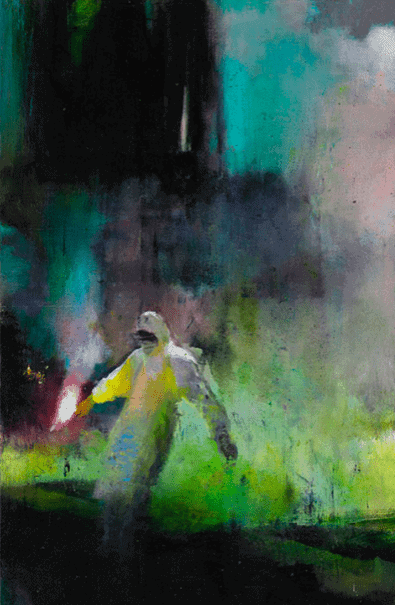
JD
I’ve read along the way—I think via Instagram—you were painting with your left hand. I was curious and tried to make a left-handed drawing as I was in my studio when scrolling, and it was an awful experience, as was the drawing.
JM
It took me a long time to get any semblance of control over the brush. The drawing was clumsy, and the marks were sometimes meaningless and random. I knew what marks I wanted to make, but my hand wouldn’t make them, and it was frustrating that my painting technique, acquired over decades, was seemingly useless. In fact, my technique did get a bit better over the weeks, and it was interesting to observe that my brain was making connections that weren’t there before.
A positive consequence was that I found myself with accidental access to a freer language, and now that my hand is more or less healed and I am working right-handed again, I find myself thinking about how to reintroduce those discordant and mismatched, lumpen marks. I’d say out of the fifteen or so pictures I worked on left-handed, about three were passable as sketchy studies, two ended up in the Korea show, and one even made it as the press image (see image above).
JD
One might say there is a connection between the current pandemic and your work. Think of the implicit apocalyptic character of your paintings, the fear residing in them, or the masked figures in protective gear as if it is no longer safe to be exposed to the outside world.
JM
I decided ten years ago to do some work about things that I was fearful of. This may have been triggered by a moment when I was cleaning my brushes on an old stack of newspapers. I found myself absent-mindedly wiping my brushes across images from the Bosnian war, and this brought me up short. I began to project myself into this situation. It was shocking to see this horror taking place in a country that looked like my own, and I began to imagine what it would be like if tanks drove down my street or a militia burst into my home and murdered my family.
Possibly because of early childhood experiences in the hospital, I have always been troubled by the feeling that everyday life could easily disintegrate, that the mundane and anticipated can be upturned, corrupted, or destroyed. I tend to avoid referencing particular events. I suspect they could be narrative cul-de-sacs. What does seem to work for me is to focus on the aftermaths, the clean-up crews, and those in protective garb. If I can imply scenarios or situations without being too explicit, the paintings might have longevity. This is perhaps why what I began painting ten years ago people have read as being pertinent now.
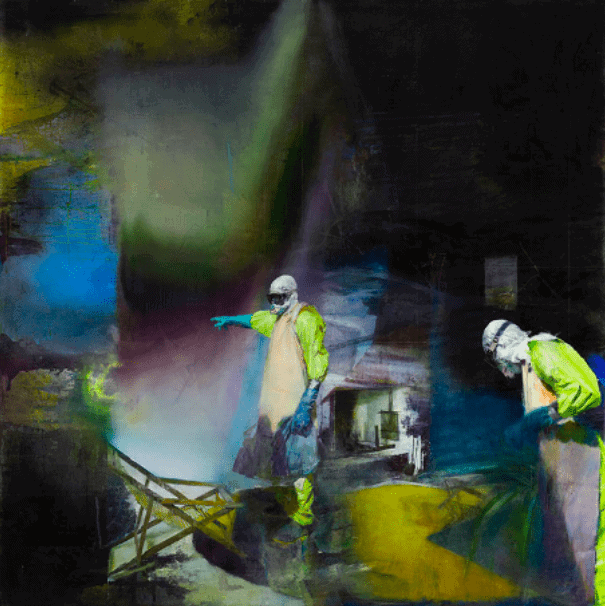
JD
There is also a series of paintings titled Home and Outside you made at the start of the pandemic and throughout 2020. I assume this is a result of the lockdown(s) and the sudden awareness of a vital distinction between ‘home’ or ‘inside’ and ‘outside’?
JM
Yes, perhaps. I was thinking of home not just as a safe domestic shelter but also existing as a claustrophobic inner world, a psychological, interior landscape of sorts.
JD
Generally speaking, 2020 will go down in the history books as not the greatest of years, to say the least. However, your extended solo exhibition at Space K in Gwacheon, Korea, was a highlight for you and your career. The show consisted of a selection of works from the past eight to ten years, if I am correct, a retrospective view of your oeuvre combined with the title Tomorrow. The exhibition was received very well, congratulations. What’s your idea upon this show, how do you look back on this selection of paintings, and what’s your view on ‘tomorrow’?
JM
Well, thank you. It was fantastic to be able to show when the art world was shutting down along with everything else, but luckily the gallery, Space K, was able to honor the show. Right from the outset, the senior curator Jang-Uk Lee, made it clear that the show was only to include paintings containing figures. There were to be none of the flower paintings that I had been making for the previous two to three years. So in a way, the show became a kind of retrospective of my figurative work by default. It was interesting that by putting all these particular paintings together, I could see common themes that, strangely, I was not so aware of at the time of their making.
Jang-Uk Lee came up with the title Tomorrow. It was a good one. Overviews such as this are, by their nature, retrospective, and the work clearly resonated with the unease we all feel for the future. Seeing visitors to the gallery wearing face masks and looking at my pictures of people with face masks was uncanny. Normality interrupted.
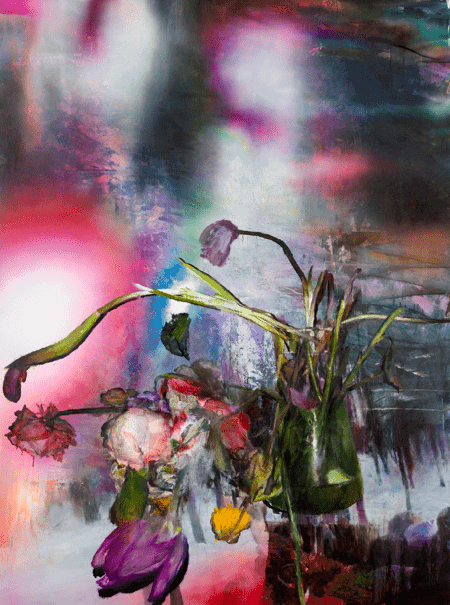
JD
The show has a great sense of continuity, although some paintings have many years between them. This indicates your oeuvre has a clear vision, process, and objective. What are the fundamental principles when you start a painting or a series of works, and have they shifted over the years?
JM
I don’t spend much time thinking about the themes; they emerge intuitively. Over the last decade, these themes seem to have explored the dark side, so the paintings are connected in that way. I recently did work with what I thought of as having less loaded content, for instance, the flower series ‘Hoax,’ ‘Taxa,’ and ‘Breed.’ But even these turned out to be meditations on mortality. Some have commented that my work is about the abject and the pitiable, and they are right in some parts, but when I look back on a show such as Tomorrow, I also see the humane, and the empathetic.
But what is undeniably changing is my approach to the painting itself. In some series, I am allowing the abstract to come to the fore and maybe a little bit more freedom in the painterly attack. I’m also interested in introducing new techniques, whether it be different oil mediums or spray painting. It’s been important to bring back the playful elements, the sheer enjoyment of smearing color around. Sometimes we need to remind ourselves why we became painters in the first place.
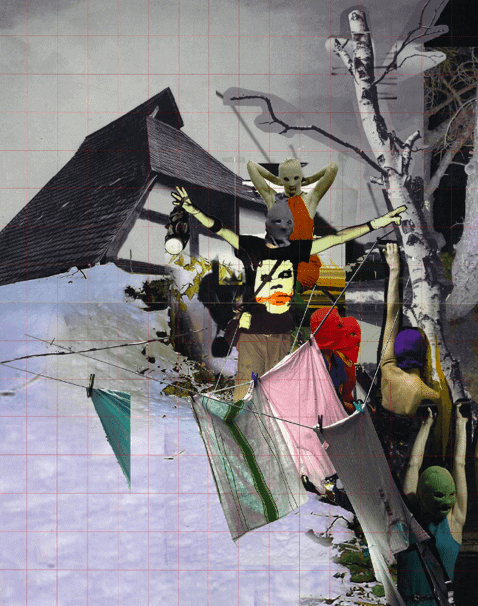
JD
As you might have expected, I want to talk briefly about your creative process. To be more specific, your ‘sketches’ or digital collages.
JM
I use an old version of Photoshop to build digital collages as ideas for my paintings. I mainly use the cut-and-paste functions and tend to ignore all the rest as they are superfluous, and all the interesting stuff happens later with the actual painting.
Before I had a computer, I made real paper collages from sources as varied as shopping catalogs, recipe books, and my own photographs. Now I mine the internet and my own archive – I have shelves in my studio with old books from charity shops, second-hand coffee table books with subjects as diverse as table decoration, home interiors, Swiss chalets, mountain tourist brochures, and orthopedic surgery. I scan in a page or two, slice them up digitally, and manipulate these elements until I hit upon an idea I can work with. I like to keep this stage quite free and spontaneous. It’s part image choreography and part 2D model building.
I’ll generally spend a day roughing out these ideas on the computer and then make a few prints of them. These are my references and my image maps. I pin them next to my canvas and use them as if painting from observation. As the canvas develops and my ideas evolve, I make and print out more collages. At a later stage, I might photograph the painting and feed this back into the collage. When new images are painted onto the canvas, previous elements are often adjusted, covered over, scuffed up, defaced, or renewed. The result usually means that there’s a fair bit of archaeology in there, and sometimes, if I end up rejecting the painting, it serves as the initial layer for a new work.
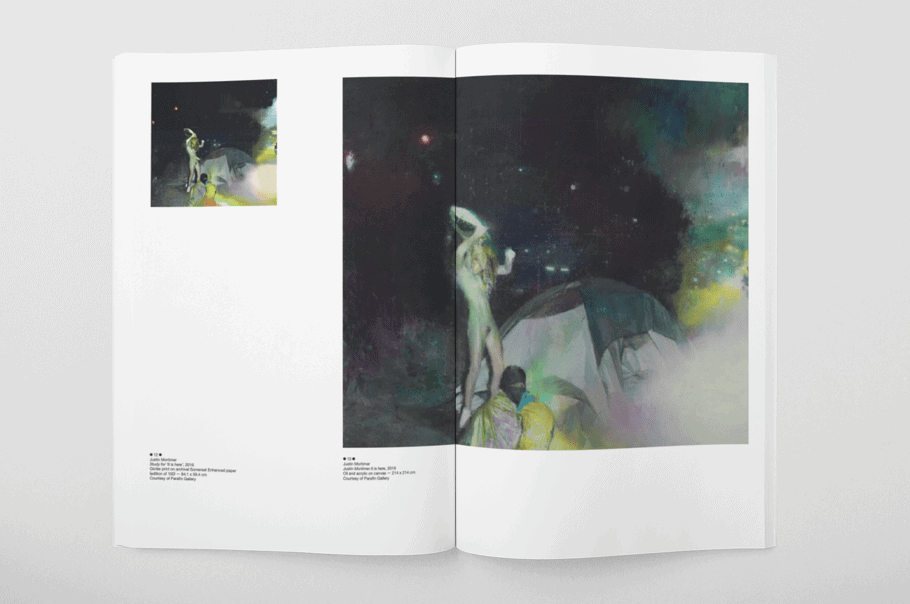
JD
Ever since the emergence of computer software, many artists started to implement software such as Paintbox or Photoshop into their artistic practice, as have you with your collages at the turn of the new millennium—think of the passage of your work in our publication Apologia. Over the past ten years, this method has become more frequently used than ever. What is your view on this trend? Why are these painted collages so appealing for the artists to make and the viewer to behold?
JM
All artists have seized on whatever technology was available to them. It is interesting how this idea of the unaided, genius artist persists and that somehow the revelation of them using ‘enhanced’ skills reduces the artist’s status to a mere trickster. It is how it is used and to what ends that count.
David Hockney has spoken about how we can date, say, seventeenth-century paintings based on the distortions created by the limitations of whatever lens-grinding technology was available at that time. In the same way, we can recognize which programs are being used by artists working today. Software is our optics now. Caravaggio was using lens technology widely available to all his contemporaries, and yet it is his pictures we are looking at. Why? Because it’s the way he paints them.
It all comes down to the talent of the artist if any work is lucky enough to become interesting. But I do worry that the tech is just so incredibly beguiling. It is so bloody easy to build an image now. You could spend a lifetime staring at the screen and never make another painting. Why bother? I have found myself making digital collages that are thrilling and very seductive – which I’d love to paint, but I know that the paint will not behave like the pixels. For a painting to succeed, it must exist separately from that digital catalyst, to exist in its own discreet world.
We, as viewers, are now having to retrain our reading of this strange slow, old-school art form. We are just so used to seeing images that could not exist before in paint. We love that ease of skimming over an emotionally blank, digital confection. It is much harder to spend time with a painting.
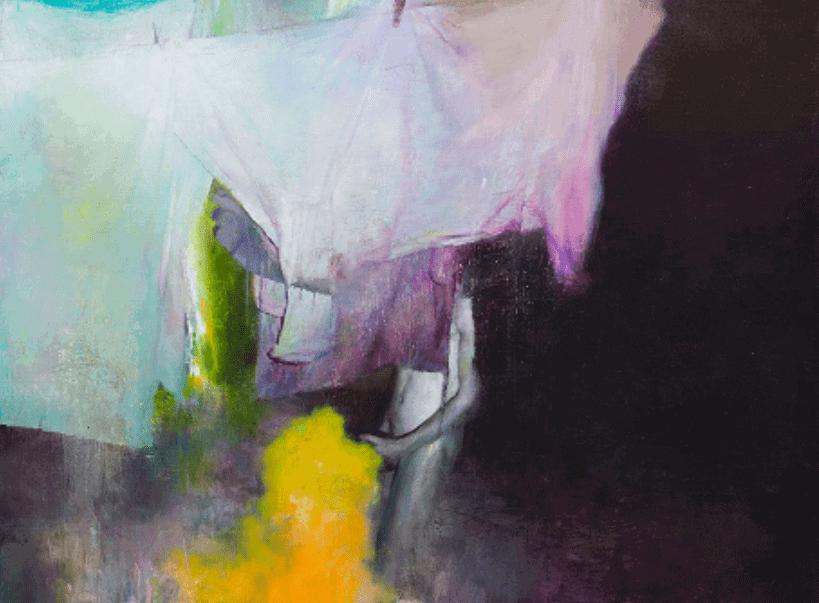
JD
It may even reflect our fragmented society, resulting in a postmodern culmination of new images based upon recycled images. Yet, although the source material consists of second-hand imagery, the result feels new and more contemporary than ever.
JM
You would think that this ease of access to imagery, this totally overbearing quagmire of pixels, would bring about a new wave of minimalism in painting. Painting as a calming tonic. Peace. But no, younger figurative artists are completely engaged with accessing this plethora, this endless supply of visual stuff. Does this mean that what is being made is simply to be expected? The visual vernacular? It wouldn’t surprise me if it were. After all, a laptop is a mirror too.
JD
A common practice one could associate with this collage approach when building images and the painter’s quest for intriguing compositions is the absence of faces. Throughout your oeuvre, this is a recurring motive as well. A balloon or a drapery floating in front of a face, the masks mentioned above, and other face-covering clothing or sometimes simply not painting the face. Where do you think this urge not to depict faces is coming from?
JM
Yes, I think this is important. I have made many small paintings with faces. This may well be because these works are to do with the character, the person inhabiting the painting. When it comes to my large pictures, I do feel a great urge to hide the face, to anonymize. I have often wondered why I do this.
I think this is to do with the huge distraction a portrait creates – a massive interruption to the larger idea in the picture. Put in a face, and the viewer’s gaze jumps straight to it, to the detriment of everything else. I think that my figures are ciphers; they are inhabitants of a world larger than their own particular story. I think they are representatives or surrogates for the theme rather than being the theme themselves. And the unspecified figure allows the viewer to occupy the painting either as protagonist or prey.
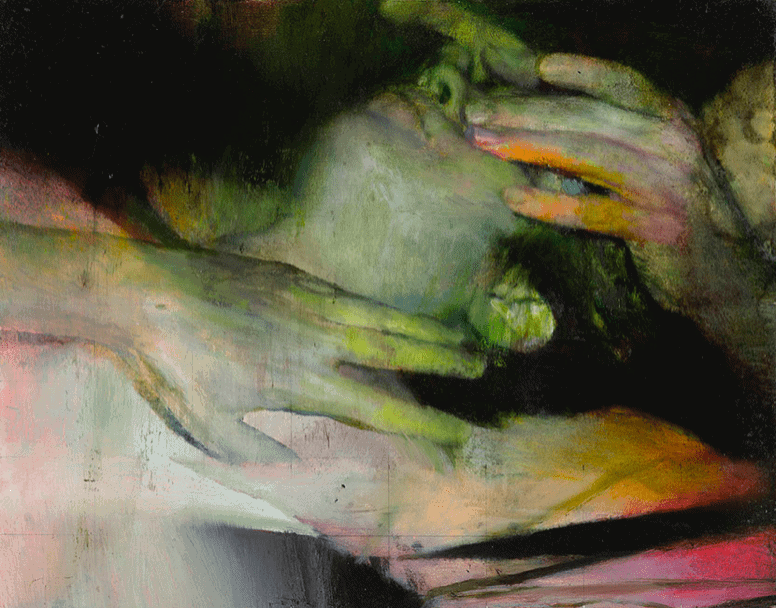
JD
I recall a similar statement by Ruprecht von Kaufmann in a previous interview. The figures remain more open when they are not ‘portrayed’ or do not have faces, evoking an emotional response in the viewer’s mind. You started out painting commissioned portraits in your early career; sound like a bit of an ironic twist?
JM
Not at all. Portraiture served a purpose, and I had the skills to deliver. Having spent years analyzing what makes a face that faces, it is completely logical to conceal it in my current work (if the painting necessitates it), as I outlined before. I am still fascinated by faces. I have a strangely good memory of them. I enjoyed my earlier life as a portrait painter (mostly!). It wasn’t something I set out to do, but it enabled me to do work and survive as an artist. I never had to get another job, and I met some extraordinary people on the way.
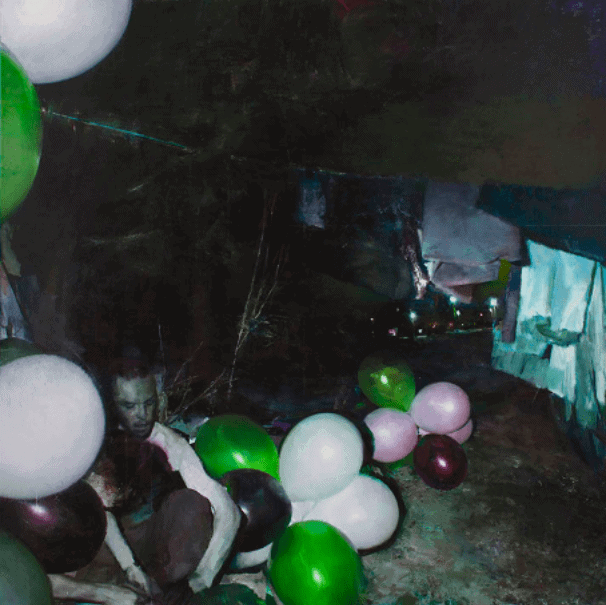
JD
Also, I’d like to talk about the reading of your paintings. I’ve mentioned the notion of ‘complex narratives’ and ‘mysterious motifs’, not being vague at all (chuckles). Do you depict reality, fiction, something in between, or maybe even something beyond both?
JM
I’m not entirely sure I can answer that one. Some people find the pictures deliberately obscure: a concealed narrative that muddles rather than describes. Opaque, perhaps, but discernible. I’m happy with that, as I’m not particularly interested in setting up a scene that has a clear intention. I do enjoy constructing an ambiguous climate that is both – hopefully – visually engaging and emotionally enigmatic.
For instance, the artist makes certain choices throughout the process of making a picture. Presumably, what is left on the canvas has a resonance for them, a reason to exist. This visual residue may, to the viewer, seem fantastical, obscure even. But to the artist, what remains is a form of reality.
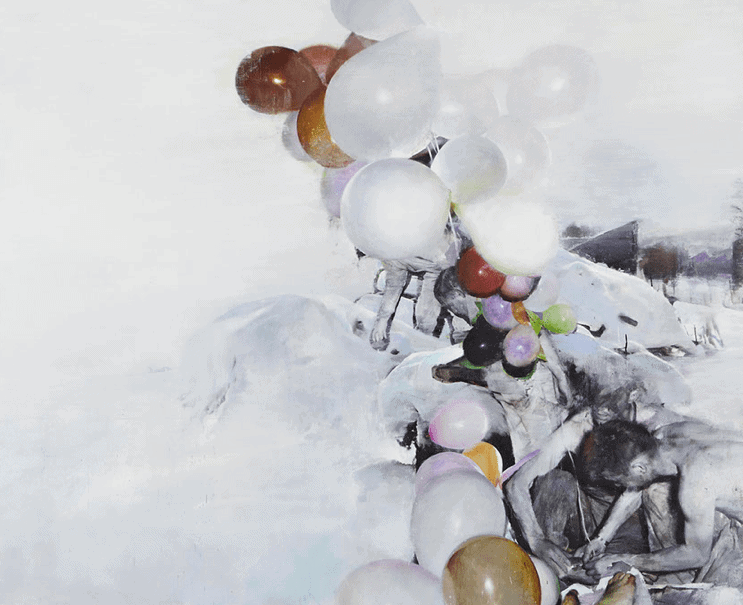
JD
These ‘mysterious motives’—the balloons, the spraying Chornobyl-like figures, or the colored smoke—can they be seen and read as metaphors, or are they simply visual fragments at the service of the overall image?
JM
Both, I’d say. Take the balloons, for example; they were a logical development from my early paintings of black plastic bin liners and latex fashion. The balloons were never about a cheap visual juxtaposition – the inappropriate placement of a child’s plaything in, say, a morgue – but instead, they became proxies for flesh. Synthetic, absolutely, but think of all that tension, that volume contained in such a strange, beautiful or ugly, singular object.
They also happen to be very engaging to paint. I’d never really thought about what a balloon really looked like – how the light passes both through and is reflected by this taught membrane – until I had begun to paint one. One never really looks until one tries to paint. This scrutiny, this act of analyzing the object and reconstructing it, requires you to discover what it is that makes it.
The smoke motif is undoubtedly used as a toxic and worrying theme. Tear gas, nerve agent, party flare, whatever it may be. But again, it lends itself to being a beautiful element in a picture. I was particularly drawn to colored smoke bombs. Here you have that bright flare with this crazy unnatural color pouring out of it. Great thick rippling ribbons of the stuff. It is both fluid and strangely solid. It is immensely challenging to paint and, therefore interesting to me. I would say loading ‘pretty’ objects with an underlying, unnerving counterpoint is quite a lot of what I do.
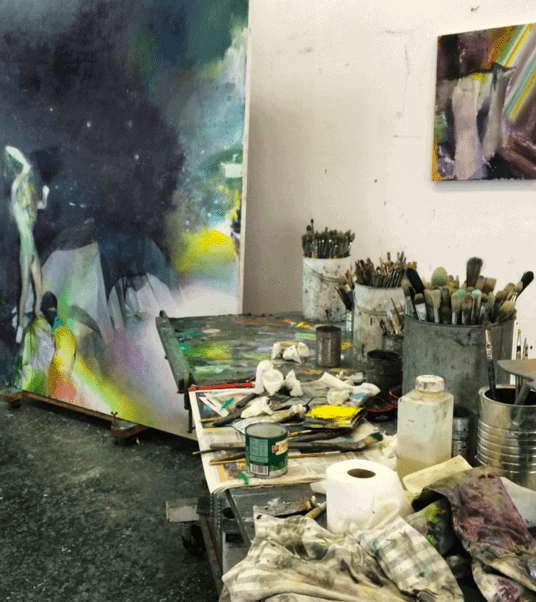
JD
You have been an important figure in this niche in painting marked by surrealism, existentialism, and the absurd. You have witnessed the development of this niche over the years, and now it seems the art world is starting to embrace it. What is your position towards this niche, the art scene, and its relevance in a contemporary context?
JM
Funnily enough, I never really thought about being part of a scene until very recently. I always felt very much of an outsider in terms of being a contemporary artist. I just stuck to my guns and made work that interested me. What else can you do?
It wasn’t until artists from the former Eastern Bloc emerged and got the attention of a few gallerists and curators that I began to be invited to show alongside them (e.g., the thriving contemporary art scene in Cluj, Romania, or the Neue Leipziger Schule). Maybe a similar sensibility was evident in my work, even though we started out as artists in European countries separated by great political and domestic differences. But it was Neo Rauch who picked 2004 my work as first prize at the East International exhibition in Norwich. This was, in fact, probably the first time my non-portrait work was given real recognition.
My work is clearly figurative, and I left art school in London when working in this way was deemed to be totally irrelevant. Art students in the Eastern bloc were still being taught figurative painting in a traditional way. It served a social role. By the early 1990s, a fresh, new figuration had emerged, made by ambitious young artists. I was very happy to be pulled into its riptide. It is ironic, though, that it took a movement from abroad to validate an indigenous British scene that had been almost completely ignored by its own institutions.
Clearly, Instagram, Tik-Tok, et al., are playing their part in the cross-pollination and dissimilation of ideas between artists of, as you say, existentialism and the absurd. However, I do think it’s a relevant way of making painting now – I mean, what times are we living through? And for that matter, always have and always will. There is always room in this behemoth of an art world for a scene such as this, but how it will be viewed from a long lens remains to be seen.
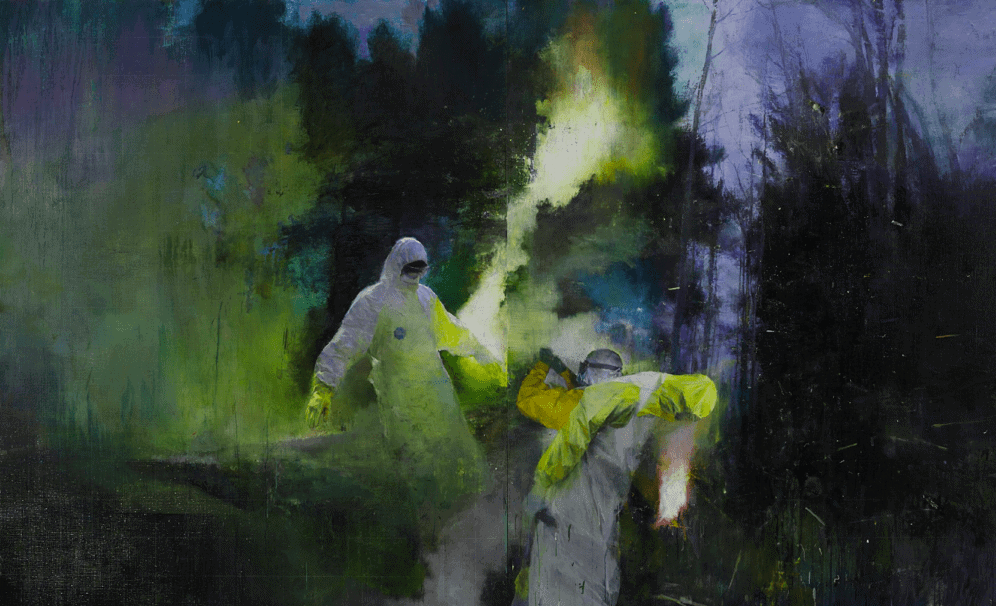
JD
One more question to conclude the interview: why painting? Out of all visual art media, why did you choose to become a painter?
JM
I always drew, but I had to learn to paint, and I still am. Every time I start a painting I have to work it out for myself. This slippery, sticky substance is difficult to use, and you can spend a lifetime wrestling with its potential. The more I work, the more elusive the thrill of the payoff. The artist as a junkie: oil paint as a balm to the niggling itch, the daily necessity of creativity.
I love how a painting is incontrovertibly connected to the character and physicality of the painter. I love how a painting holds every mark made, the record of its making, the journey. It is a record of the artist’s presence. It exists outside the artist’s intentions.
I am still often flabbergasted by a painting, a picture made from a colored paste smeared over a surface. How can this object be so mysterious and engaging? I’m not sure, and for that reason, I keep going.
JD
What a great line to end the interview. Justin, I would like to thank you for your time, your intriguing answers, and above all for your paintings.
JM
It has been interesting to take some time to put my thoughts together. Thank you, Julien.
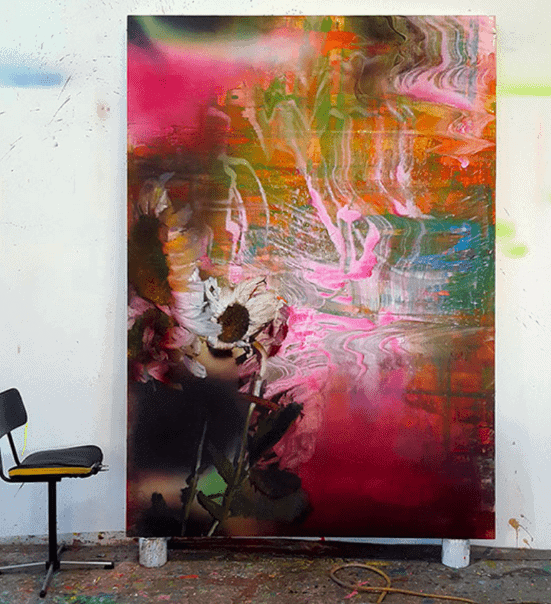

Galerie Krinzinger, Vienna, AT
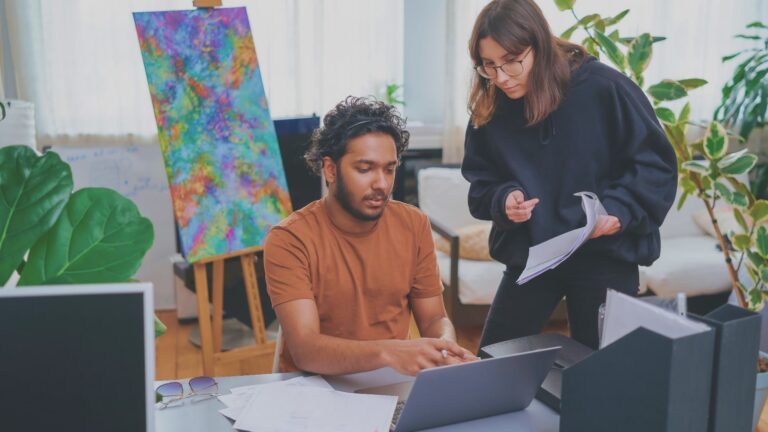
Tutorial & Template